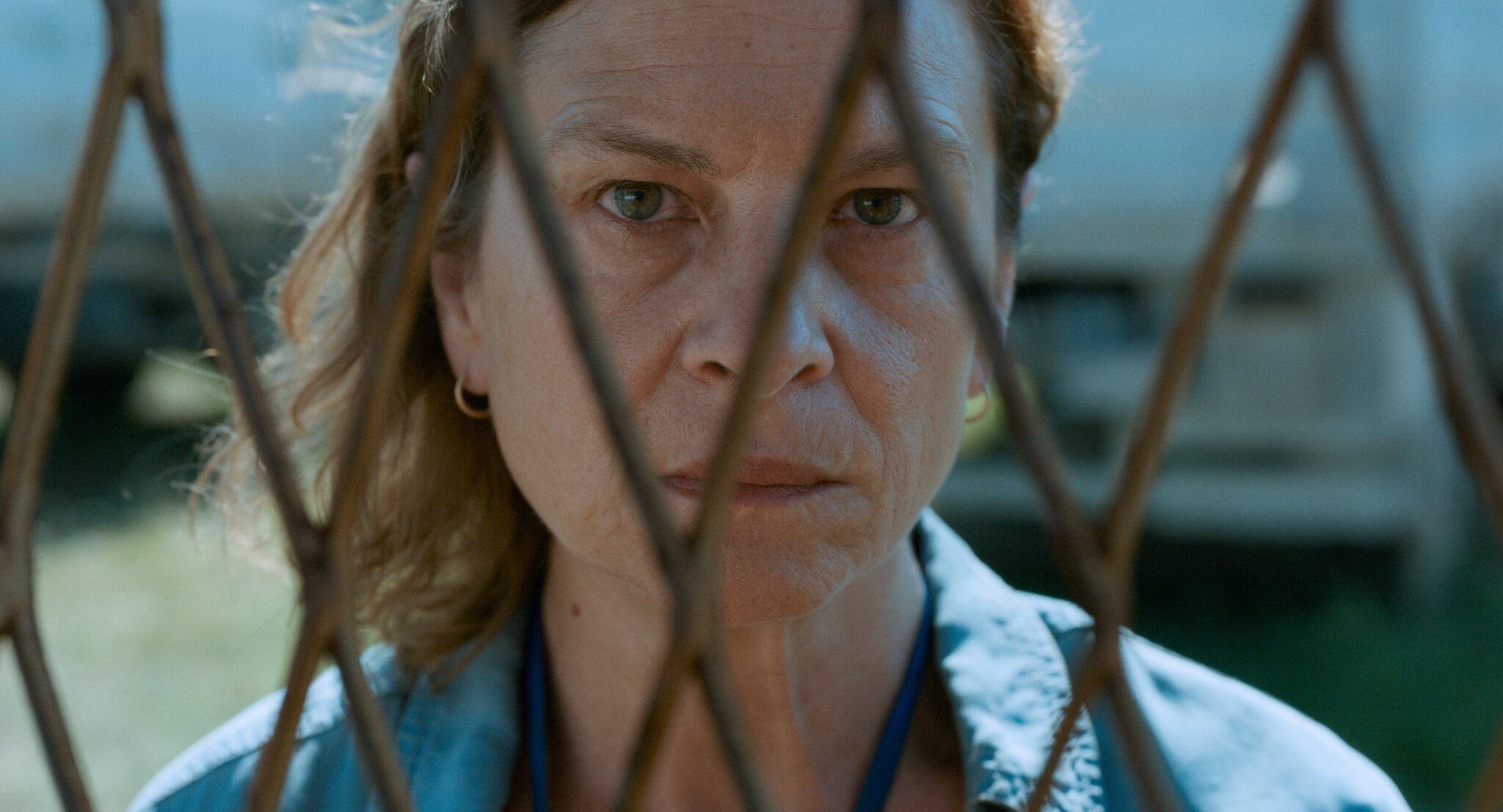 The Bosnian War – the result of the break up of Yugoslavia amongst other issues – raged from April 1992 until December 1995. Ethnic cleansing was common practice, through either mass murder or forced expulsion. The Srebrenica Massacre of July 1995 saw more than 8,000 Bosniak Muslim men and boys lose their lives. Quo Vadis, Aida? charts the build up to this harrowing event, through the eyes of a UN translator and her family.
The Bosnian War – the result of the break up of Yugoslavia amongst other issues – raged from April 1992 until December 1995. Ethnic cleansing was common practice, through either mass murder or forced expulsion. The Srebrenica Massacre of July 1995 saw more than 8,000 Bosniak Muslim men and boys lose their lives. Quo Vadis, Aida? charts the build up to this harrowing event, through the eyes of a UN translator and her family.
Based on Hasan Nuhanovic’s book, Under the UN Flag, Jamila Zbanic’s film centres around a UN shelter in the village of Srebrenica, a designated “safe zone” which was designed to protect those who had fled their homes. More than 25,000 people packed into the small area, without any signs of food, water or sanitary facilities. The arrival of Ratko Mladic and his troops brought destruction, chaos and death.
Jasna Djuricic, in the titular role as translator Aida, gives a phenomenal performance. You can see and feel her desperation as the situation around her spirals. She wants to protect her sons and husband; she wants to save her neighbours and friends; she is shocked when she sees her former students armed and in uniform, supporters of Mladic. It’s a performance that slowly gathers momentum. At first, she is quiet; a listener. As the film progresses – and tensions mount – she becomes increasingly erratic; shouting, running, begging. Djuricic is one of the strongest female leads you’ll ever have the pleasure of watching.
In contrast, Boris Isakovic (The Father), plays Ratko Mladic, the war criminal who came to be known as the Butcher of Bosnia, with an icy coolness. He is still, snarling, sanctimonious. His displays of benevolence are a performance for his documentary crew.
The camerawork throughout really adds to the escalating hostilities. It is often unsteady, swirling around in panic alongside Aida. Zbanic juxtaposes these moments with long, tracking shots, particularly over the waiting crowds. There are small glimpses of normality – a hug being given, a cigarette being smoked, a top being folded – in amongst all the uncertainty. Zbanic takes her time, tracing over the expectant faces of those who have fled.
In one of the first few scenes, an overhead shot of Srebrenica is shown. The village looks like something out of a fairytale – all clean buildings and spires and forest. Seconds later, bombs start going off. Another contrast is the use of colour in Aida’s flashback. She is at a night out, where vibrant sequins and jewel tone lipstick are the order of the day. Everyone is smiling and dancing. In the “safe zone” – awash with cool blues and dusty apricots – everyone is unsettled; silent.
Although, ultimately, as viewers we know how this terrible historical event ends, Zbanic does manage to expertly build the tension and uncertainty throughout. This is mainly achieved through moments of extreme sound set against silence. When Aida first looks out over the “safe zone”, the huge swell of voices gives an idea as the scale of displaced people who have fled. When the Serbian soldier, Joka, (Emir Hadzihafizbegovic) insists on searching the shelter, you can’t help but hold your breath as he silently inspects each individual. It’s especially unbearable when he begins to pull back a baby’s blanket, gurning at the trembling young mother.
 * spoilers ahead * But, arguably, the most harrowing moments of the film are when the Serbian soldiers begin to pack the crowds onto buses (with the blessing of the UN, no less). It’s reminiscent of any Holocaust movie you have ever seen. Women scream as they are separated from their husbands and sons; kicking and dragging themselves in protest. The subsequent massacre – the last looks shared between fathers and sons – is utterly devastating to watch. The noise of the machine guns followed by stark, brutal silence as the camera slowly pans back down the street is an absolute cinematic masterclass in driving emotion.
* spoilers ahead * But, arguably, the most harrowing moments of the film are when the Serbian soldiers begin to pack the crowds onto buses (with the blessing of the UN, no less). It’s reminiscent of any Holocaust movie you have ever seen. Women scream as they are separated from their husbands and sons; kicking and dragging themselves in protest. The subsequent massacre – the last looks shared between fathers and sons – is utterly devastating to watch. The noise of the machine guns followed by stark, brutal silence as the camera slowly pans back down the street is an absolute cinematic masterclass in driving emotion.
It’s easy to understand why Quo Vadis, Aida? was nominated for both an Oscar and a BAFTA, as well as picking up countless international awards along the way. It is a harrowing, powerful depiction of the desperation and devastation of war.
Quo Vadis, Aida? is now streaming on Netflix.
- The Return – Review from Glasgow Film Festival - March 9, 2025
- Homegrown – Review from Glasgow Film Festival - March 8, 2025
- Nocturnal – Review from Glasgow Film Festival - March 7, 2025




